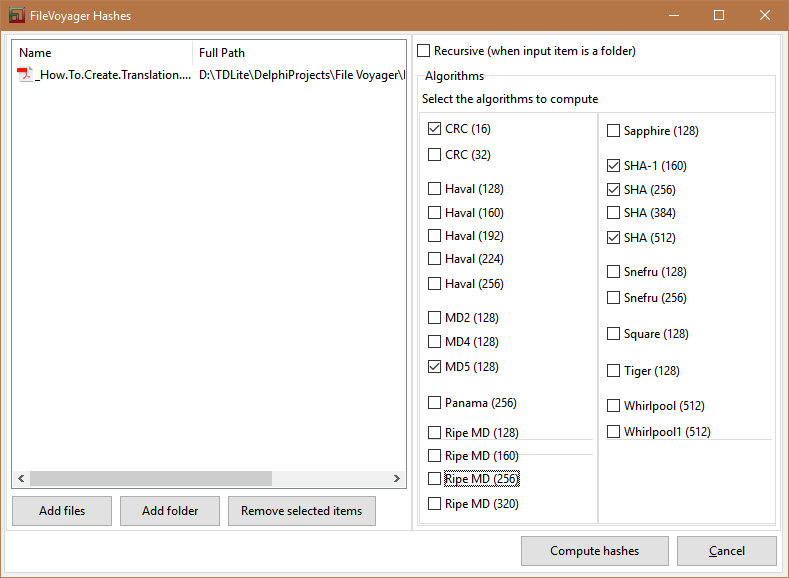As announced last week, a new release of FileVoyager was cooking. The time is come to throw it into the wild.
This release brings the new Hash Tool. FileVoyager pretends to be a Swiss Army Knife. Now, with the Hash Tool, it’s more true than ever before.
A hash function (or algorithm) is able to process any type, any size, any format of file, and extract from it a fingerprint. But I’m not going to explain it here. I prefer to redirect to the Wikipedia page explaining it.
“A hash function is any function that can be used to map data of arbitrary size to data of fixed size. The values returned by a hash function are called hash values, hash codes, digests, or simply hashes.”
As of now, one will be able to launch hash computations from within FileVoyager. The new Hash Tool will be able to use multiple algorithms in one single step.
As visible in the image below, there are 26 supported algorithms.
There’s a more elaborated page dedicated to the tool in the Documentation section of the site.


So hurry up, and download the latest version. Or simply let’s FileVoyager update itself.
And don’t forget, if you like FileVoyager and want to contribute to its development:
- You can help by buying me a coffee



 , because I work on it late at night
, because I work on it late at night - You can help by creating, maintaining or correcting translation files. Head to this article, your help will be welcome.
- You can help by creating, maintaining or correcting tutorials in the forum
- You can help by liking, following or talking about FileVoyager in social networks, or in blog posts, or in articles.
- You can help by reporting bugs or wrong behaviors.
- You can help by requesting features.
- You can help by participating in the forum.
- Or you can still help by buying me a coffee



 , because
, because - I still work on it late at night
And if none of the above suits you, just use FileVoyager and if you enjoy it, I am rewarded.

